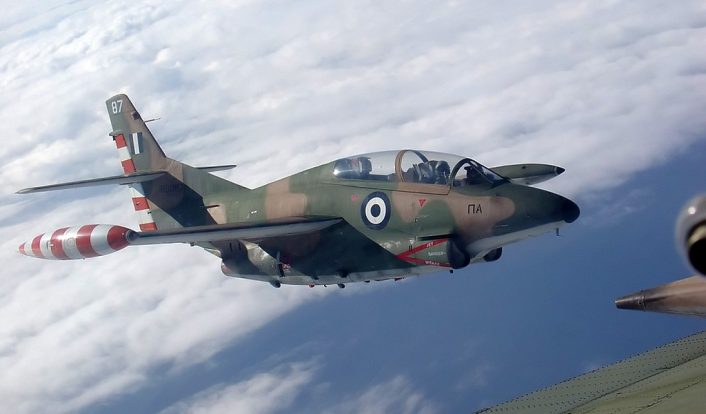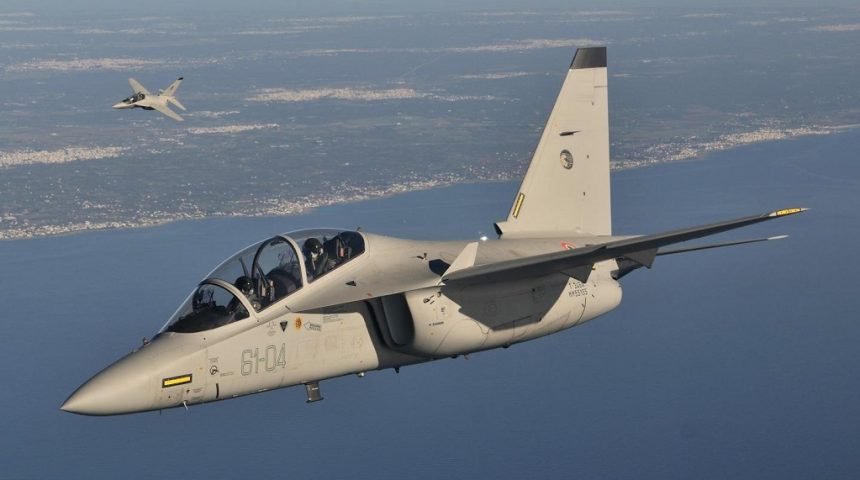The new Flight School will be built and operated by Elbit at Kalamata Air Base, where the Hellenic Air Force currently train its pilots on the T-6A Texan II and the T-2E Buckeye.
The governments of Greece and Israel reached an agreement for the future flight training of the new pilot of the Hellenic Air Force. The agreement, which has not been signed yet, covers the creation of a new flight school by Elbit Systems at Kalamata Air Base, home of the 120th Air Training Wing, the procurement of 10 Leonardo M-346 Master advanced trainer aircraft and the maintenance of the HAF T-6A Texan II fleet.
As part of an agreement between @Israel_MOD and the @Hellenic_MOD we were selected for the $1.68 billion Flight Training Program of the @HAFspokesman, https://t.co/paWGUCUP79 pic.twitter.com/tdAettKwXA
— Elbit Systems (@ElbitSystemsLtd) January 5, 2021
The announcement arrived after months of negotiations between Greece, Israel and Canada, the other contender in the project. The proposals by both countries were anticipated last summer by the Greek newspaper Protothema. The goal of the project is the total renovation of the HAF training as new advanced aircraft like the Rafale and the F-35 join the fighter fleet, replacing the obsolete T-2E Buckeye (of which 40 were bought and less than 10 are still operational) and restoring the T-6A Texan II (45 bought but with limited availability because the lack of support).
The agreement, which will be signed by both defense ministries also includes the procurement of ten M-346 aircraft & maintenance of T-6 aircraft, as well as the provision of simulators, training & logistic support 2/3
— Ministry of Defense (@Israel_MOD) January 5, 2021
The Canadian proposal submitted by CAE, one of the leaders in the flight training sector, included the replacement of T-2E with the M-346, the maintenance and restoration of the T-6A to at least an 80% availability, new flight simulators and restoking the spare parts inventory. CAE has 71 years of experience in aviation training and also operates the NATO Flying Training in Canada (NFTC) program at Moose Jaw, Saskatchewan and Cold Lake, where more than 1500 pilots have been trained on a fleet of T-6 (CT-156 Harvard) and Hawk (CT-155 Hawk) trainers. Their goal is to use the NFTC model to turn Kalamata into an international training center, where pilots from neighboring countries could be trained together with Greek pilots as amortization of the 20-year contract’s funding of € 1.254 billion.
The Israeli proposal submitted by Elbit Systems is very similar to the one from CAE, with ten M-346, the maintenance of the T-6 and new simulators. The goal of the project is to model the flight school at Kalamata after the Israeli Air Force’s flight academy, which is heavily supported by Elbit and uses the T-6 and the M-346, while also allowing other countries to send their pilots to be trained in Greece. Their contract amounts to € 1.375 billion over 22 years.
According to Protothema, the Israeli proposal was considered more advantageous both economically and in terms of flight and simulator hours offered. While the amount of the latter has not been specified, Elbit’s offer would have an average annual cost of 62.5M Euro, while CAE’s would be 62.7M Euro. This would be consistent both with the economic crisis that hampered the HAF and the recent spending spree of the government to urgently acquire new aircraft, helicopters, ships and weapons to reinforce the armed forces in their long-lasting stand-off with Turkey.
As we already reported, in September 2020 the Greek government announced the acquisition of 18 Rafale jets, six of which will be newly built Rafale F3-R while the remaining twelve are second-hand Rafale F3-O4T which are reportedly being upgraded to the F3-R standard. In November, the government requested an urgent purchase of between 18 and 24 F-35s, “new or used by the US Air Force, if available”. Some Greek medias even claimed that some of these aircraft could the six jets built for Turkey that are being held “in long-term storage in the United States pending final decision on their disposition”, after Turkey was expelled from the F-35 program in 2019. Both the new aircraft types have been requested to be delivered as early as this year.

This adds up to the F-16 Block 70 upgrade of 82 of the HAF’s 153 F-16C/Ds Block 52 by Lockheed Martin and the Hellenic Aerospace Industry, with the subsequent in-house upgrade of the F-16C/Ds Block 50 by using equipment removed during the Block 70 upgrade, the purchase of four MH-60R Seahawk helicopters and modernization of the 11 S-70B6 Aegean Hawk helicopters already in service, the upgrade program for 19 AH-64 Apache helicopters (also by Elbit) and other programs by the Army and Navy.
Another argument reportedly considered to be instrumental to the Israeli win are the good relations and numerous joint exercises between Greece and Israel and the fact that both countries agree on the destabilizing role of Turkey in the Eastern Mediterranean region. During the last few years, Israel has been a regular guest of the Iniochos exercises at Andravida Air Base, Greece, an occasion that they use to train against the S-300PMU-1 surface-to-air missile system, stationed in Crete, which is owned also by Iran and Syria. Greece, on the other hand, took part in the Blue Flag exercises which are held every two years at Ovda Air Base, Israel. Other exercises also involved the two countries’ armies and navies.
A timeline for the contract has not been disclosed yet, however the support for the T-2E is set to end in 2023, so it is likely that the new flight school aims to begin operations with the new M-346 by that timeframe. The project is now moving in the government-to-government negotiations phase for the last details and the contract’s signing by both defense ministries.
As for the M-346, contrary to some first reports, Protothema reported that the T-2 will be replaced through the leasing of new aircraft, so it is possible that the new Masters will be owned and operated by Elbit instead of the HAF, although they may wear the national insignia like the two Leonardo-owned M-346 that joined the International Flight Training School (IFTS) at Lecce-Galatina Air Base alongside the 18 aircraft of the Italian Air Force.
It is worth noting that international training already takes place at Kalamata, as the Italian Air Force has a detachment (Rappresentanza dell’Aeronautica Militare Italiana) that, since 2009, trains Italian alongside Greek pilots on the T-6A trainers of the 120th Air Training Wing.









